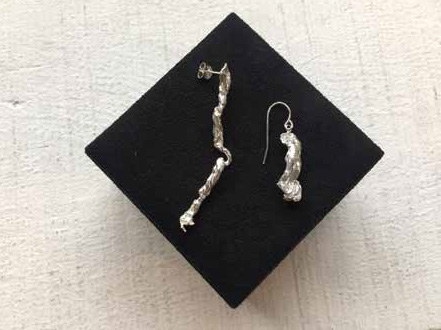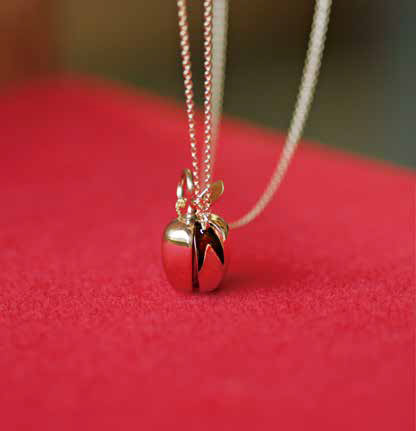- Home
- News
- Art Works
- PACHINKO TRIOGY ー777ー
- PYRMID ーYin Yang versionー
- FEVER
- MASS+GAME
- PYRAMID
- A VIVID MORNING ON THE NORTH SIDE
- MIKARA DETA SABI
- Paper model-type missile
- Plastic model-type missile
- LOVE IS STRONGER THAN DEATH
- LOVE&DEATH
- SCARY STORY
- MIKARA DETA SABI ーTERRITORYー
- MASS GAME —The Wasp—
- BLOOD
- MIMI-NASHI-HOICHI
- War Accessory
- DURST
- FLOWER POT —Destruction and Rebirth—
- Labor Mobilization
- DURST ZWEITE ーTERRITORYー
- DURST DRITTE —TOKYO WHITE CUBE—
- ANTI-GRAVITY
- Collaboration with Chinen Daichi
- Untitled
- Projects
- Biography
- Book
- Studio
https://43artproject.jimdosite.com
Projects
4.3 Art Project -逆走して歴史と出会う-
プレゼンテーション-大阪編-
日時:2024年5月25日(土)18時〜20時
会場:大阪コリアタウン歴史資料館
〒544-0034 大阪府大阪市生野区桃谷4丁目4番11号
(コリアタウン本通りと交差する一条通り北50m)
入場料:無料
An Art Project on the relationship between the Jeju 4.3 Incident and Japan
Presentation by Project Artist Fujiwara Yuki - Osaka –
4.3 Art Project
- Running backwards and meeting history –
Saturday, May 25, 2024, 18:00 - 20:00
Venue: OSAKA KOREA TOWN MUSEUM
4-4-11 Momodani, Ikuno-ku, Osaka-shi, Osaka 544-0034, Japan
Admission: Free
<プロジェクトステートメント >
本アートプロジェクトは、1948年4月3日~1954年9月21日までに韓国・済州島で起こった「済州島4.3事件」と日本の関係性をテーマとしたアートプロジェクトである。
2016年に済州島のレジデンスに3ヶ月間滞在していた藤原は、アメリカ軍統治時代に始まった済州島内での虐殺事件「済州島4.3事件」を初めて知った。調べていくとその事件と日本の関係性が非常に深いことを知り、何か日本で中長期的なプロジェクトができないかと思ったのがこのプロジェクトを考えるきっかけとなっている。藤原はレジデンス終了後も済州島アートフェアへの参加や、プロジェクト自体のリサーチで断続的に済州島に滞在し、現地住民や美術関係者と交流を深めてきた。
隣国であり海で繋がっている日本国側(日本海側)に立って海を眺めながら済州島4.3事件を想像する事からこのプロジェクトのコンセプト構築は始まった。
事件当時、多くのコリアンの方が船に乗って(貨物船、漁船に紛れて)済州島から日本に逃れてきており、今も在日コリアンとして世代を重ねて各地で生活されている。この事件自体は韓国・済州島内で起きた同じ民族同士の虐殺事件ではあるが、先述したように日本との関係も深く、日本(日本人)にとっても考えていかなければならない歴史ではないだろうか。日本国側にいる日本人の立場、視点でこの一連の歴史へのリアクションとして実施するプロジェクトである。
まずは4.3事件や4.3事件と日本の関係性をより多くの方に知ってもらうことから始めて行き、アートでこの歴史を記憶していくと共に、この事件を基軸とした日韓の創造的な交流へと繋がる事を願う。
<Project Statement>
This art project focuses on the relationship between Japan and the “Jeju 4.3 Incident,” which took place on Jeju Island, South Korea from April 3, 1948 to September 21, 1954.
During a three-month residency on Jeju Island in 2016, Fujiwara began during the American military occupation of Jeju He first learned about the “Jeju 4.3 Incident,” a massacre on the island that began during the American military occupation. Upon researching the incident, he learned that it had a very close relationship with Japan, and he wondered if there was any medium- to long-term project in Japan, which led him to consider this project. After completing his residency, Fujiwara continued to participate in the Jeju Art Fair and intermittently stayed on Jeju Island to conduct research for the project itself, deepening exchanges with local residents and art professionals. The concept of this project began by imagining the Jeju 4.3 Incident while standing on the Japanese side of the island (Sea of Japan side), which is connected to the island by the sea, and looking out over the sea.
At the time of the incident, many Koreans fled to Japan from Jeju Island on boats (mixed in with cargo ships and fishing boats) and are still living in various parts of Japan as Korean residents, generation after generation. Although this incident itself was a massacre between Koreans of the same ethnic group on the Korean island of Jeju, as mentioned above, it has a close relationship with Japan and is a history that must be considered by the Japanese people as well. This project is a reaction to this series of history from the standpoint and perspective of Japanese people on the side of Japan.
We will start by making more people aware of the 4.3 Incident and the relationship between Japan and the 4.3 Incident, and hope that art will help people remember this history and lead to creative exchanges between Japan and Korea based on this incident.
<作品コンセプト>
済州島4.3事件は韓国・済州島内で起きた同じ民族同士の虐殺事件ではあるが、その事件をきっかけに日本に逃れてきた方が多く住まれている現状を踏まえて、済州島から日本へ向かうという流れを、日本から済州島へと「逆走」する捉え方でプロジェクトの骨格を構築。1部(大阪・生野区)、2部(長崎・大村)、3部(韓国・済州)の順番で1年ごと、計3年かけて、3部作の立体作品を発表する。その行為をもって歴史へのリアクションとする試み。
1部 「裏」編 2025年4月3日より1ヶ月間開催予定。 開催地:大阪・生野区
例えば、「1948.4.3」という事件関連の看板が済州島内にあるとする。それは済州島に立った人々のための数字の読み順であるが、日本に立って済州島を見る(想像する)時、数字の裏側を見る事になる。だが、日本との関係性においては裏側だけではなく表側も見える事になる。象徴的な数字「1948.4.3」を表側と裏側から見た状態をミックスし、現在の状況を表現。スリット状に切り込みを入れた数字に向けてインタビュー映像を照射して、光の数字を浮かび上がらせる。
2部 「逆」編 2026年4月3日より1ヶ月間開催予定。 開催地:長崎・大村
日本側から済州島へ向けてメッセージが入った透明ボトルにGPSを取り付けて海に流す。日本から済州島へ向けてメッセージを届ける参加型作品。まずは4.3事件の関係者や本プロジェクトに興味のある方の直筆の手紙を透明なガラス瓶に詰め込み展示する。会期後、瓶に封じられたボトルメッセージを日本海(五島列島沖の海域)に投げ入れる。海流や風の影響により数ヶ月、数年あるいは数十年後にボトルが直接的に済州島に届くか他の国を経由して間接的に済州島に届くイメージを持つ。
3部 「反」編 2027年4月3日より1ヶ月間開催予定。 開催地:韓国・済州
済州島民の反対、反旗、反骨の精神をイメージソースとして、4.3事件を象徴する椿をモチーフとした追悼の意を込めた立体作品。長崎の五島列島で製造されている椿油を使ったキャンディを素材として、溶けたそのキャンディを無数の穴が空いた構造物の上部から滴らせ落下したキャンディの模様は自ずと反転している。キャンディは当時のアメリカ軍支配の状況を暗示させる。
<Concept of the work>
The project framework is based on the Jeju 4.3 Incident, a massacre that took place on Jeju Island in South Korea, and the fact that many people who fled to Japan after the incident live in the island. The first part (Ikuno-ku, Osaka), the second part (Omura, Nagasaki), and the third part (Jeju, Korea) will be presented one year at a time for a total of three years to create a three-part three-dimensional work. This is an attempt to make this act a reaction to history.
The first part : “Back” version To be held for one month starting April 3, 2025. Venue: Ikuno-ku, Osaka
For example, suppose there is a sign related to the incident “1948.4.3” within Jeju Island. That is the reading order of the numbers for people standing on Jeju Island, but when you stand in Japan and look at (or imagine) Jeju Island, you will see the reverse side of the numbers. However, in relation to Japan, we see not only the reverse side but also the front side. The symbolic number “1948.4.3” is mixed with the front side and the back side to express the current situation. The interview video is irradiated toward the slit-shaped incised numeral to bring the numeral to light.
The second part: “Reverse” version Scheduled to be held for one month starting April 3, 2026. Venue: Omura, Nagasaki
Participatory work in which transparent bottles containing messages from the Japanese side to Jeju Island will be floated into the sea with GPS attached, delivering messages from Japan to Jeju Island. First, handwritten letters from those involved in the 4.3 incident and those interested in the project will be packed into transparent glass bottles and exhibited. After the exhibition period, the bottled messages sealed in the bottles will be thrown into the Sea of Japan (the waters off the Goto Islands). The bottles will be imagined to reach Jeju Island directly or indirectly via other countries in a few months, years, or decades, depending on the influence of ocean currents and winds.
The third part: “Anti” version Scheduled to be held for one month from April 3, 2027. Venue: Jeju Island, Korea
Using the opposition, anti-flag, and rebellious spirit of the Jeju islanders as the image source, this three-dimensional work is a memorial work using camellia, a symbol of the 4.3 Incident, as its motif. The candy made from camellia oil produced in the Goto Islands of Nagasaki was used as the material for the work, and the pattern of the falling candy was naturally reversed when the melted candy dripped from the top of the structure with numerous holes in it. The candy suggests the situation of U.S. military control at the time.
MIKARA DETA SABI PROJECT
“Fujiwara’s Body Rust Discharge Workshop” is an art project that revolves around “rust” inside the body.* Illustrated are various
episodes around the participants, related to what I call ”the body discharging rust,” using actual rust resulting from a natural chemical reaction. The finished works, the participants keep as warnings to themselves.
* The original Japanese name of this project refers to a Japanese idiom that literally translates as “rust coming out of the body,” meaning “to take the consequences of one’s own deeds” or “to reap what one has sown.” “Rust” in this case can thus be understood as “residue” that amasses in oneself as a result of previous actions.
Translated by Andreas Stuhlmann
「ふじわら 身から出たさび科」とは自身の「身から出たさび」を吐き出す藤原勇輝によるアートプロジェクト。
参加者自身の「身から出たさび」エピソードを自然素材の鉄から出たさびで描く。完成後は参加者自身が保管し、戒めとなる。
Trailer
▼Japan version(Workshop)






▼Jeju island/Korea version



Umbilical Cord Accessory Project


実際のへその緒
Real umbilical cords


Umbilical Cord Accessory
2018
Silver925, hook, pin
W10 D10 H130 mm
W10 D10 H50 mm
This project started off from a request from a female friend, who asked me if I could make her child’s umbilical cord into a silver accessory. An umbilical cord is a mysterious and somewhat grotesque object (organ) that represents the connection between mother and child. The habit to preserve it carefully seems to be rather unusual even in a global context. This participatory art project aims to examine the increasingly diluted indigenous Japanese culture and mentality, by decorating the body once again with the same umbilical cord that was once cut off from it.
Translated by Andreas Stuhlmann
子供のへその緒をシルバーアクセサリーにできないかという知人女性からの依頼でこのプロジェクトは始まった。へその緒は母と子の繋がりの象徴であり、神秘的でありグロテスクである物体(臓器)である。それを大切に保管する習慣は世界でも稀であるという。一度切り離したへその緒をもう一度身につける事で、希薄化する日本古来の文化とメンタリティを考察する参加型アートプロジェクト。
Washi Mask Project 2020
Washi Mask Project 2020
2020
Video 7'20"(©️Hayashi Yuki )
Washi mask project: Japanese paper masks interwoven with plague themed literary texts
In March 2020, the unavailability of face masks from both physical and online stores inspired many people – including myself – to create their own masks. That was also when someone at H.Factory
approached me with the suggestion to produce masks from Japanese washi paper.
In the process of gathering information, I found inspiration in Albert Camus’s The Pest (1947), a novel in which the author illustrates his personal experience with the French Resistance movement
he was involved in, while at once battling the plague that was spreading in Medieval Europe at the time. The concept for this work developed from my discovery that those events coincided with the
history of Japanese “balloon bombs” (the balloons for which were made of washi paper) that were used toward the end of the war.
Viruses and wars confront us with aspects of life and death. The idea behind this mid-/long-term art project is to carefully think about “how we can survive in the future,” through the act of
producing and wearing masks made of washi paper, as long as the current virus is plaguing us.
Translated by Andreas Stuhlmann
和紙マスクプロジェクト —ペスト文学を織り交ぜた和紙マスク—
2020 年3 月現在、店頭やネットでマスクを買うことが難しくなり自作のマスクを身につける人が増えた。そして、私もその1 人であった。そんな中、H.Factory から和紙を使ったマスクを作ってはという提案を頂いた。
情報を収集していく中で、アルベール・カミュの1947 年に出版された小説「ペスト」に着想を得た。中世ヨーロッパで世界的に流行した感染症ペストと自らの大戦中のレジスタンス活動の経験を重ね合わせたとされる小説と、終戦間近に使用された風船爆弾(気球部分が和紙)の歴史とが同じ時間軸を共有する事に気付き、そこを出発点にコンセプトを構築していった。
ウイルスや戦争は我々に生、死を突きつける。和紙マスクを作り、身につける行為を通して本ウイルスの収束までの期間中に「これから我々はどう生き抜くか」をゆっくり考察する中長期型アートプロジェクト。
BunnyLingo Project


BunnyLingo
Since 2010
Earring
K18
Pair pendant
K10
The BunnyLingo brand offers a range of Fujiwara-produced goods.
Inspired by Claude Levi-Strauss’s text “The White Hare of Inaba,” I mixed parts of English and Japanese to create the brand name “BunnyLingo.”
It combines the image of a hare that, according to a Japanese myth, got its fur ripped off by sharks for deceiving them, and the custom of cutting the peel of an apple – ringo (or lingo) in
Japanese – in the shape of rabbit ears as a lunch box garnish.
Translated by Andreas Stuhlmann
バニーリンゴは、藤原によるプロデュースプロダクト。
レヴィ= ストロースの「因幡の白兎」への言及に着想を得て、英語と日本語を組み合わせた造語「BunnyLingo」をブランド名とした。
神話の中で、白兎は嘘をついてワニザメに皮を剥ぎ取られる。その様と、ウサギ型に皮をカットされたリンゴが弁当箱に入っている様を重ね合わせモチーフとした。







